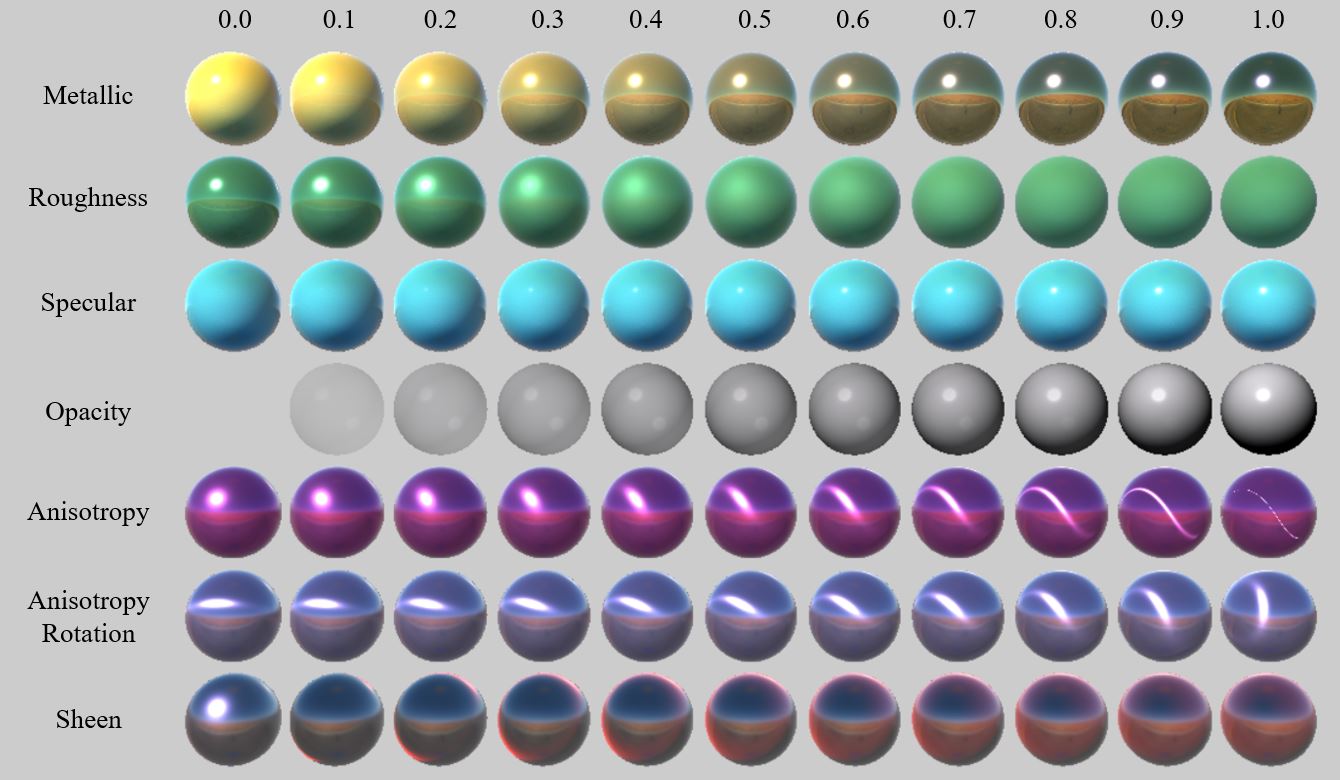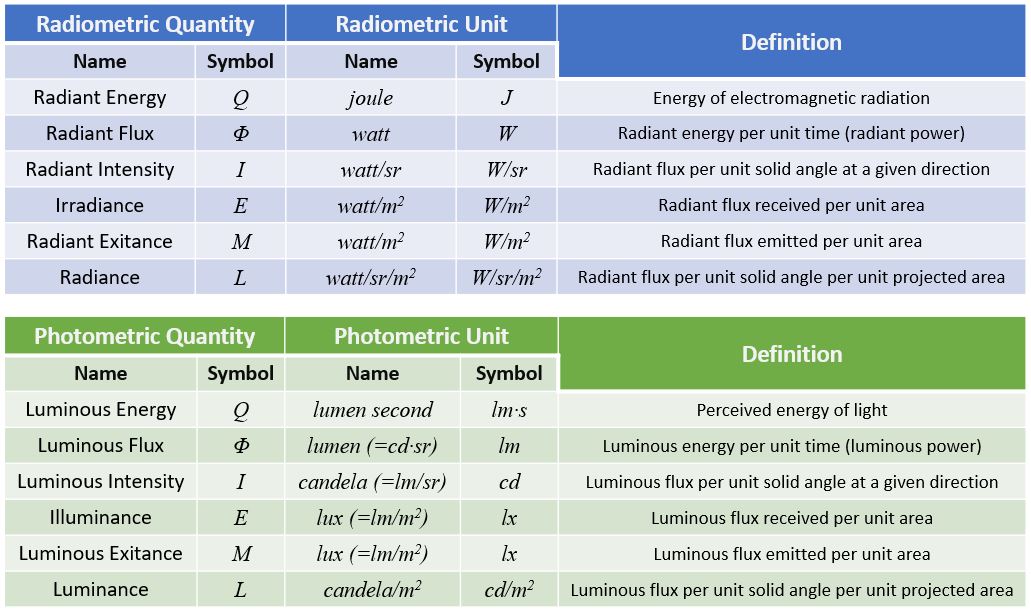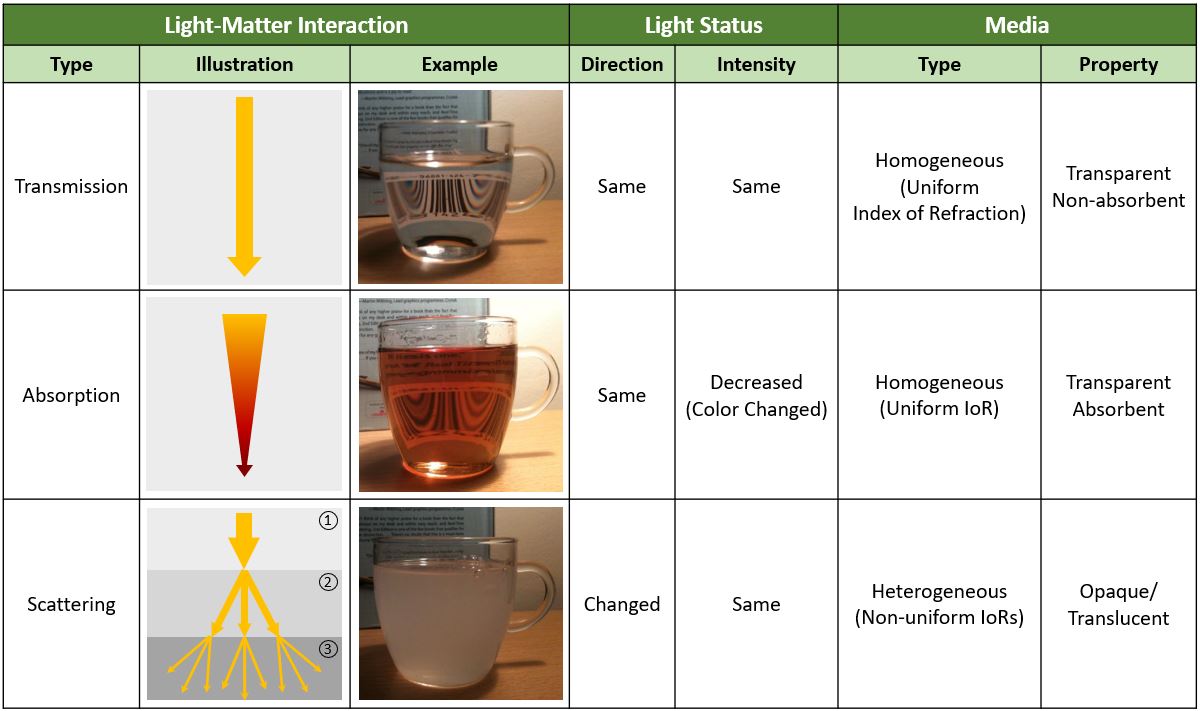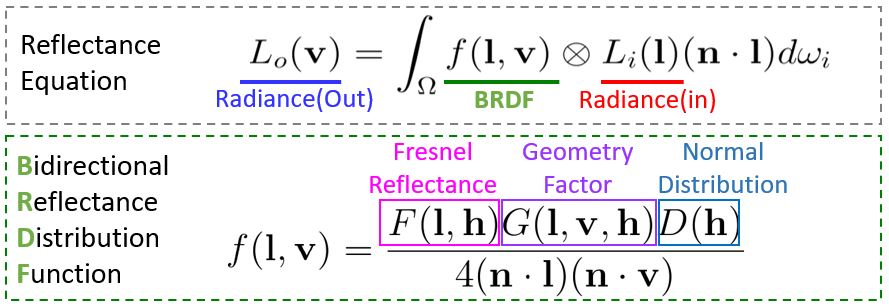| Previous |
Physically Based Rendering (PBR)
Siemens Digital Industries Software

Variational effects visualization of the core PBR parameters of: metallicness, roughness, specular, anisotropy and anisotropy rotation.

Image-Based Lighting with skybox environment map. Model courtesy of Siemens Lightworks; HDR image courtesy of HDRLabs Archive.

Siemens Iray+, together with the Iray Plugin, form a PLM component software for high-quality rendering provided by Siemens Lightworks. Above is an image of caustics rendered by Iray+ (produced by advanced ray tracing algorithms on top of PBR).
Physics of Light, Radiometry and Photometry

Light as an electromagnetic transverse wave. The range of visible light wavelength is a tiny span on the entire spectrum. Images courtesy of Naty Hoffman's notes.

Key physical concepts and quantities in radiometry and photometry for real-time rendering.

Comparison of similar quantities between radiometry and photometry.

Light-matter interaction types: transmission, absorpbtion and scattering. This diversity of behavior results from the absorbant and refractive property of media. When the Index of Refraction (IoR) changes slowly and continuously, light bends; when the IoR changes abruptly, over a small distance compared to the wavelength, light scatters. Images in the Examples column courtesy of Naty Hoffman's notes.
Bidirectional Reflectance Distribution Function (BRDF)

As an important physical concept in both radiometry and photometry, solid angle (unit: steradian) is the 3D analogy of angle (unit: radian). The differential solid angle formula is derived in the figure to the right.

The local coordinate frame of normal, tangent and bitangent vectors at a point on a surface being lit by the light vector and viewed from the view vector. The light vector and view vector will becomes the input and output directions respectively in the reflectance equation and the BRDF formulation later.

The Reflectance equation gives the amount of output radiance received (how much light viewed) at a particular view direction, given a point on a lit surface, with the input radiance sources of lights coming from all directions integrated over the entire local hemisphere. The BRDF kernel in the integral dictates the exact apperrance by considering the physically based modules of Fresnel Reflectance, Geometry Factor and Normal Distribution. Each word in BRDF bears important connotations as below:
- Birectional: it is a function of TWO directions (light and view vectors)
- Reflectance: light is REFLECTED from the incoming direction to the view direction
- Distribution: given an incoming light direction, describes how the radiant energy is DISTRIBUTED, after the light bounces back from the surface, over the entire hemisphere as viewed from all the outgoing view directions (total outgoing radiant energy is no greater than the incoming energy hence respecting the law of Conservation of Energy)
- Function: it's a mathematical FUNCTION of direction vectors and varying number of angles

Dual interpretations of BRDF:
- For a ray of incoming light from a given direction, the BRDF gives the distribution of outgoing light in all directions
- For a given view direction, the BRDF gives the relative contribution of each incoming direction